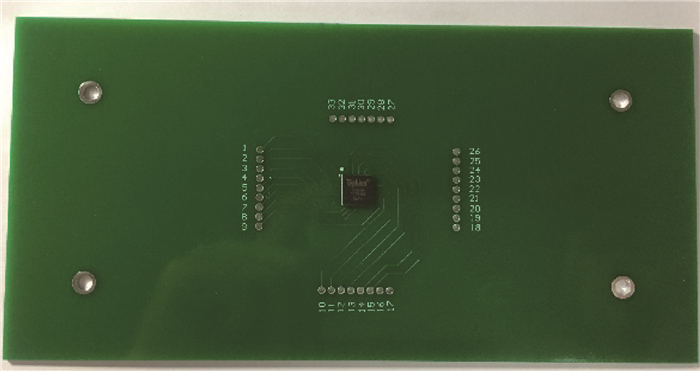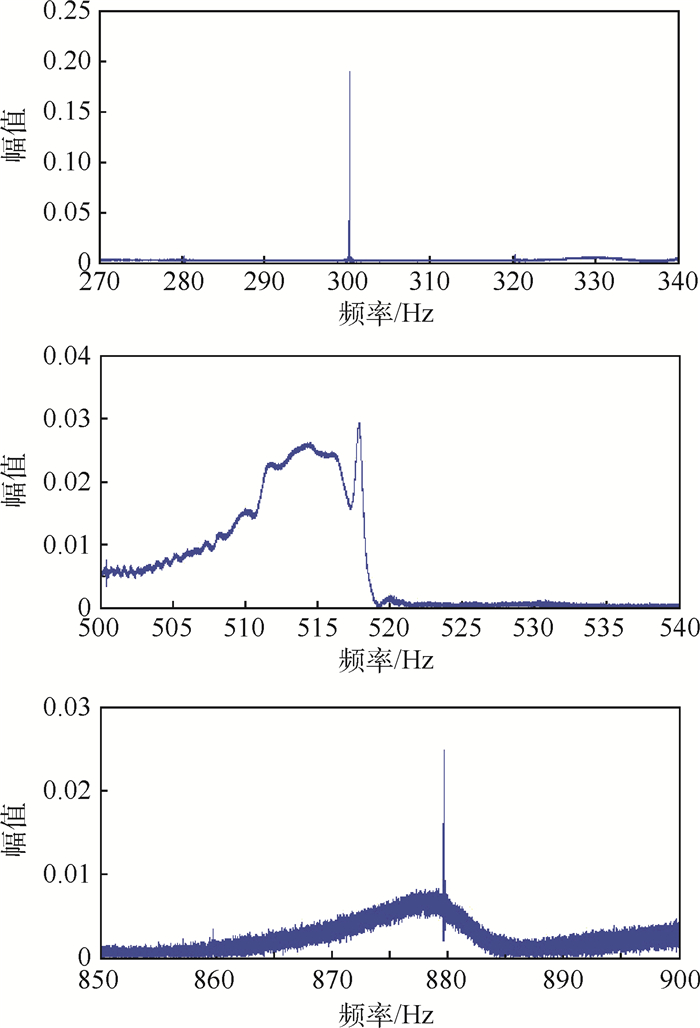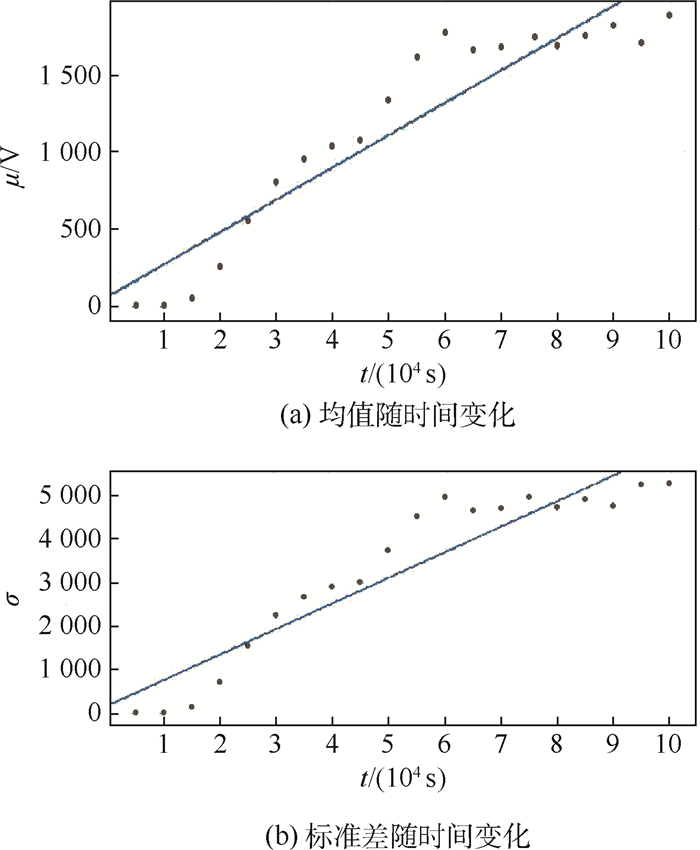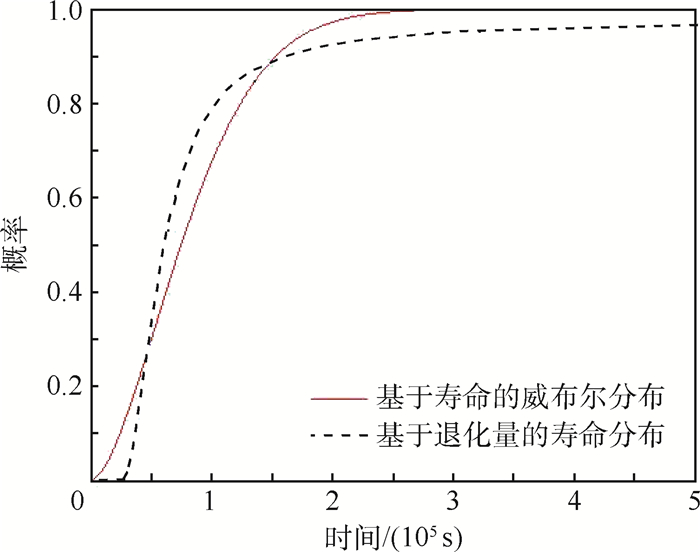Experimental research and statistical analysis of fracture failure for interconnected structures in electronic chips
-
摘要:
针对电子芯片互联结构失效机理复杂、寿命数据难以获取且缺乏具有理论依据支撑的寿命分布模型等问题,开展了基于退化试验数据的统计分析研究,并提出了2种统计建模方法。首先,搭建了电子芯片可靠性评估试验台,利用菊花链测试芯片为试验对象获取了互联结构的退化数据和寿命数据;其次,基于断裂力学理论,分析了互联结构断裂失效的失效机理,给出了BGA封装形式的电子芯片互联结构寿命分布服从两参数威布尔分布的理论依据,由此建立了基于寿命数据的电子芯片互联结构寿命分布模型;再次,利用退化量的分布建立了基于退化量数据的电子芯片互联结构寿命分布模型;最后,对2种统计建模方法进行比较分析。结果表明,基于退化量数据的寿命分布模型与基于寿命数据的寿命分布模型吻合度良好,2种分析方法在结果上具有一致性。
Abstract:Aimed at the problems of complex failure mechanism of interconnected structures in electronic chips, difficulty in obtaining lifetime data, and lack of a theoretically supported life distribution model, a statistical analysis based on degraded experimental data was conducted. First, an electronic chip reliability evaluation testbed is built, and the daisy-chain test chip is used as the test object. Degradation data and lifetime data of interconnected structures are acquired. Then, based on the theory of fracture mechanics, The failure mechanism of interconnection structure is analyzed. The theoretical basis of the two-parameter Weibull distribution of the life distribution of the interconnection structure of electronic chips in BGA package is given. The life distribution model of the interconnection structure of electronic chips based on the life data is established. Next, using the distribution of degradation, a lifetime distribution model of the interconnected structures in electronic chips is established. Finally, the two statistical modeling methods are compared. The results show that the lifetime distribution model based on degradation data is in good agreement with that based on lifetime data.
-
表 1 各组试验件的累计失效时间
Table 1. Accumulative failure time for each group of test piece
试验组 累积失效时间/s 1 60 627 2 118 618 3 42 017 4 165 376 5 26 115 表 2 两参数威布尔分布的参数估计
Table 2. Parameter estimation of two-parameter Weibull distribution
参数 数值 形状参数m 1.667 尺度参数η 93 002 -
[1] 胡家兴, 景博, 汤巍, 等.电子设备无铅焊点的热疲劳评估进展与展望[J].空军工程大学学报(自然科学版), 2016, 17(6):7-12.HU J X, JING B, TANG W, et al. Evaluation and prospect of thermal fatigue on lead-free solder joints in electronic equipment[J].Journal of Air Force Engineering University(Natural Science Edition), 2016, 17(6):7-12(in Chinese). [2] 周德俭.电子制造中的电器互连技术[M].北京:电子工业出版社, 2010:1-5.ZHOU D J.Manufacturing technology for electronics[M].Beijing:Electronic Industry Press, 2010:1-5(in Chinese). [3] GUO Q, ZHAO M, WANG H F.SMT solder joint's semi-experimental fatigue model[J].Mechanics Research Communications, 2005, 32(3):351-358. doi: 10.1016/j.mechrescom.2004.03.011 [4] 胡家兴, 景博, 汤巍, 等.无铅微焊点的热效应仿真及可靠性分析[J].电子元件与材料, 2016, 35(3):81-84.HU J X, JING B, TANG W, et al.Thermo effect simulation and reliability analysis of lead-free micro solder joints[J].Electronic Compoents and Materials, 2016, 32(3):81-84(in Chinese). [5] PANG J H L, WONG F L, HENG K T, et al.Combined vibration and thermal cycling fatigue analysis for SAC305 lead free solder assemblies[C]//2013 IEEE 63rd Electronic Components and Technology Conference.Piscataway, NJ: IEEE Press, 2013: 1300-1307. [6] KWON D, AZARIAN M H, PECHT M.Remaining-life prediction of solder joints using RF impedance analysis and Gaussian process regression[J].IEEE Transactions on Components Packaging & Manufacturing Technology, 2015, 5(11):1602-1609. [7] TANG W, JING B, HUANG Y F, et al.Multistate degradation model for prognostics of solder joints under vibration conditions[J].Chinese Journal of Electronics, 2016, 25(4):779-785. [8] 陈垚君, 景博, 常雅男, 等.振动载荷下板级焊点退化状态表征与分析[J].微电子学, 2017, 47(6):866-871.CHEN Y J, JING B, CHANG Y N, et al.Failure characterization and analysis of board level solder interconnects under vibration load[J].Microelectronics, 2017, 47(6):866-871(in Chinese). [9] 王文, 孟光, 刘芳, 等.基于比例风险模型的板级无铅焊点跌落寿命分析[J].振动与冲击, 2011, 30(3):124-128. doi: 10.3969/j.issn.1000-3835.2011.03.025WANG W, MENG G, LIU F, et al.Lifetime analysis of lead-free solder joints under drop impact using proportional hazards model[J].Journal of Vibration and Shock, 2011, 30(3):124-128(in Chinese). doi: 10.3969/j.issn.1000-3835.2011.03.025 [10] 余荣斌, 刘桂雄, 徐欢.基于β分布统示法的光伏组件性能退化可靠度估算[J].仪器仪表学报, 2015, 36(11):2586-2593. doi: 10.3969/j.issn.0254-3087.2015.11.024YU R B, LIU G X, XU H.β distribution uniform expression based photovoltaic modules reliability evaluation with degradation data distribution[J].Chinese Journal of Scientific Instrument, 2015, 36(11):2586-2593(in Chinese). doi: 10.3969/j.issn.0254-3087.2015.11.024 [11] 王立, 李晓阳, 姜同敏.基于退化量分布时序分析的产品寿命预测[J].北京航空航天大学学报, 2011, 37(4):492-498.WANG L, LI X Y, JIANG T M.Life prediction of product based on degradation amount distribution time series analysis[J].Journal of Beijing University of Aeronautics and Astronautics, 2011, 37(4):492-498(in Chinese). [12] 祝耀昌, 李韵, 徐俊, 等.民用飞机机载设备振动实验要求和应用分析(一)[J].装备环境工程, 2016, 13(4):54-61. http://www.cnki.com.cn/Article/CJFDTOTAL-JSCX201605021.htmZHU Y C, LI Y, XU J, et al.Vibration test requirements and application analysis of civil aircraft equipment(1)[J].Equipment Environmental Engineering, 2016, 13(4):54-61(in Chinese). http://www.cnki.com.cn/Article/CJFDTOTAL-JSCX201605021.htm [13] 军用装备实验室环境试验方法: 第16部分: 振动实验: GJB 150.16A-2009[S].北京: 中国人民解放军总装备部.Military equipment laboratory environmental methods: Part 16 vibration experiment: GJB 150.16A-2009[S].Beijing: PLA General Armament Department(in Chinese). [14] FORMAN R G, SHIVAKUMAR V.Growth behavior of surface crack in the circumferential plane of solid and hollow cylinders[M]//UNDERWOOD J, CHAIT R, WILHEM D, et al.Frac-ture Mechanics: Seventeenth Volume.West Conshohoken: ASTM International, 1986: 59-74. [15] KIM Y K, HWANG D S.PBGA packaging reliability assessments under random vibrations for space applications[J].Microelectronics Reliability, 2015, 55(1):172-179. [16] 钱萍.航天电连接器综合应力加速寿命试验与统计分析的研究[D].杭州: 浙江大学, 2009.QIAN P.Research on multiple stresses accelerated life test and statistical analysis of aerospace electronic connecter[D].Hangzhou: Zhejiang University, 2009(in Chinese). -








 下载:
下载:








